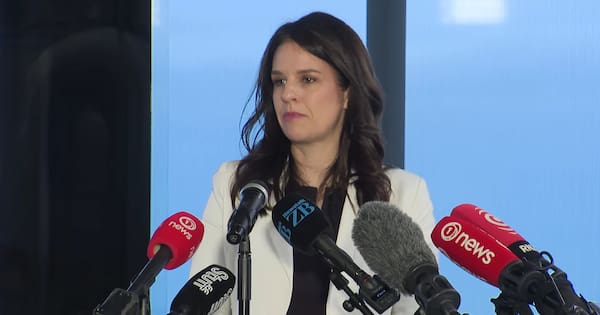Education Minister Erica Stanford has imposed a near total ban on Māori in new additions to a series of books used to teach five-year-olds to read.
An Education Ministry report shows Stanford decided in October last year to exclude all Māori words except for characters’ names from any new books in the Education Ministry’s Ready to Read Phonics Plus (RtRPP) series.
The paper showed the decision was driven by concern Māori words were confusing for children learning to read English though evidence of that was mixed.
Stanford told RNZ the decision affected only 12 books that would finish the series, after which the series, including 27 books with Māori words, could be reprinted.
The ministry’s report said: “Under this option, we would not include kupu Māori in all phases of the RtRPP scope and sequence for any future books. The 13 RtRPP books currently in development do not contain any kupu Māori, apart from character names.”
It was not clear in the paper whether the books would be reprinted.
“As noted above, the RtRPP resources are expected to have a lifespan in schools of approximately 10 years, so it would take several years for the books containing kupu Māori that are currently in circulation to be replaced in practice.”
The document showed Stanford also instructed the ministry to develop a teaching sequence in the English curriculum to help teachers prepare children to read Māori words from their second year at school.

Stanford told RNZ that would stop teaching children in mainstream classrooms to pronounce and read Māori from being “left to chance”.
The ministry’s document said currently from Year 4, Māori words were included in the curriculum with increasing frequency and complexity.
Stanford told RNZ she considered rewriting the 27 books that contained Māori words to retain only the proper nouns in Māori, but later decided against it.
“These are very early readers that teach children to learn to read and there are already ‘heart’ words in there that children have to memorise in English and if there are some te reo words in there as well, then that’s okay and we’ll leave them as they are,” she said.
She described the decision as the middle position between conflicting advice.
The minister’s October decision included reprinting one of the books, ‘At the Marae’, as a big book but not as a ‘reader’ for children to take home — something that angered many teachers and principals in the past week.
The document showed Stanford raised the issue after “experts in structured literacy approaches” told her that including two different languages in the books could confuse learners and make it harder for them to master English phonetics.
The ministry’s paper said evidence about that was mixed but there was a case to consider the amount of Māori words in books for children learning to read.
Literacy experts told RNZ this week Māori words were part of everyday New Zealand English and did not present problems for beginning readers because their spelling was regular and their vowel sounds matched some of the English vowels.
The document said 26 of the 75 Ready to Read books had up to three Māori words and a 27th, ‘At the Marae’, had six Māori words.
The morning’s headlines in 90 seconds, including the legal fight to get a New Zealand woman and her child out of US immigration detention, sliding house prices, and Taylor Swift’s big reveal. (Source: 1News)
A hand-written note on the document showed the minister wanted te reo Māori introduced when children stopped using “decodable” books like the Ready to Read series, usually at the end of their first year at school or early in their second year.
“I want to include in the NZC (English) a section on Te Reo vowel sounds and pronunciation to ready students for reading te reo words in school journals as previously discussed,” she wrote.
Stanford also noted that: “Interestingly — I asked kura leaders if they would accept English words in te reo Māori decodable books and they no. So it would be consistent to keep one language only in very early Year 1 decodable books, except for names.”
The ministry’s paper said the Ready to Read series was designed to teach the reading of English “and the sound-letter correspondences in English”.
“Our advice to schools is to teach kupu Māori in RtRPP books as “told” words. The foundational skill of phonic decoding within the resources is based on the English language and students are not expected to decode the kupu Māori,” it said.
The paper warned the options could result in pushback from schools.
“If we discontinue the use of kupu Māori (apart from character names) in RtRPP books, there may be a negative response and media attention. [REDACTED] In particular, recalling existing books has the potential to generate pushback.”
The minister wrote in response: “It’s only in Year 1 decodable books that teach English and it would align with the approach taken in te reo decodables. Te Reo would be introduced immediately after the use of decodable stops which is typically end of Year 1 early Year 2 where students move on to journals.”

